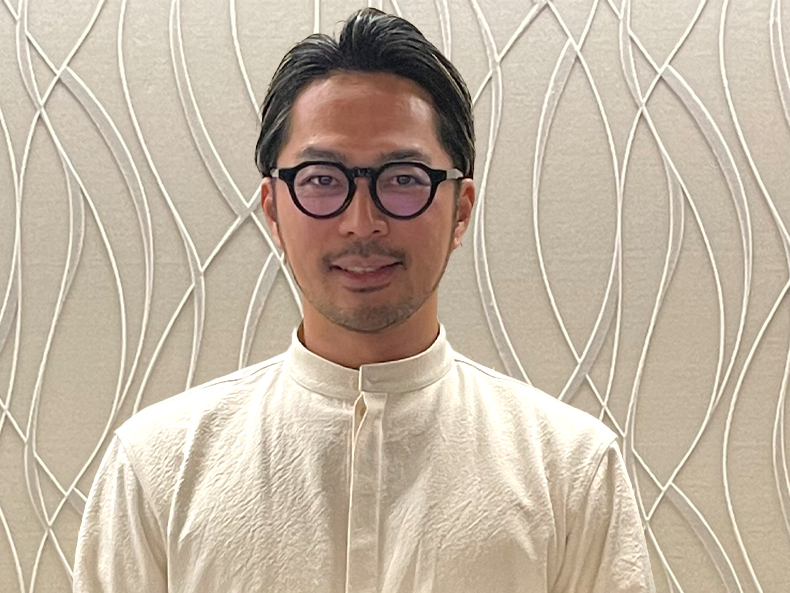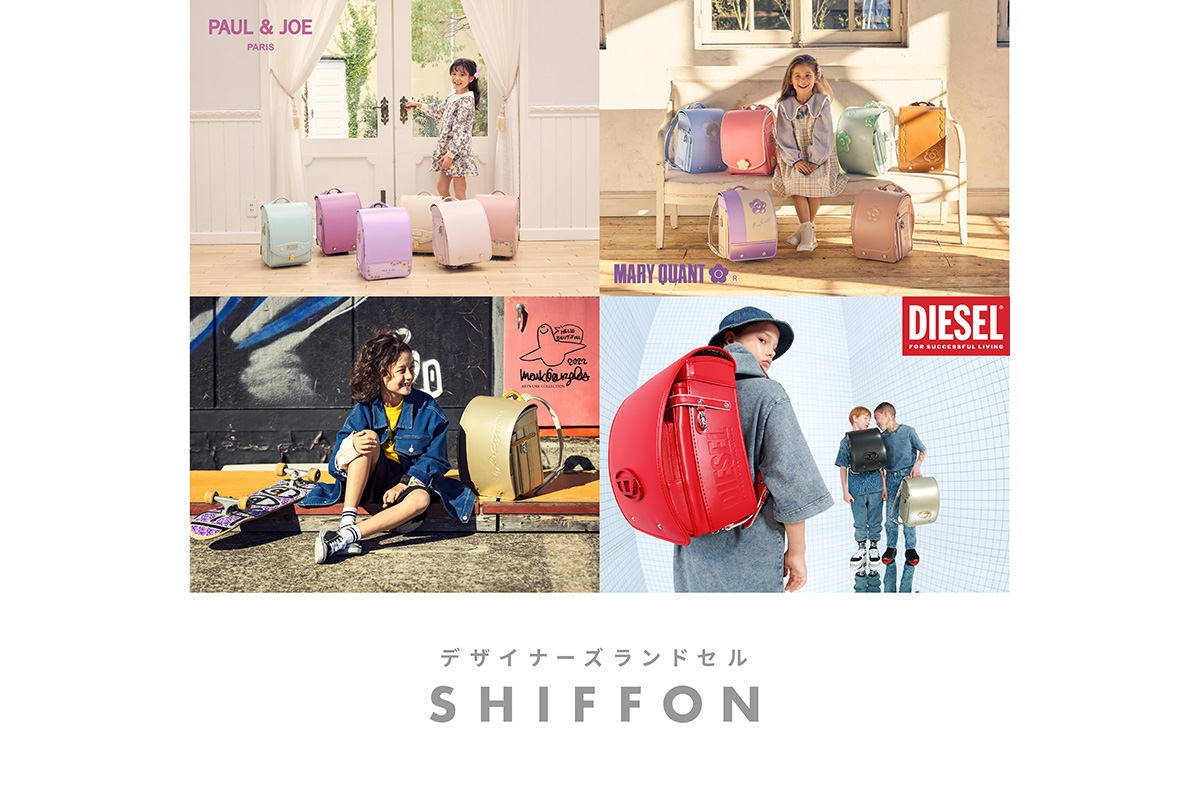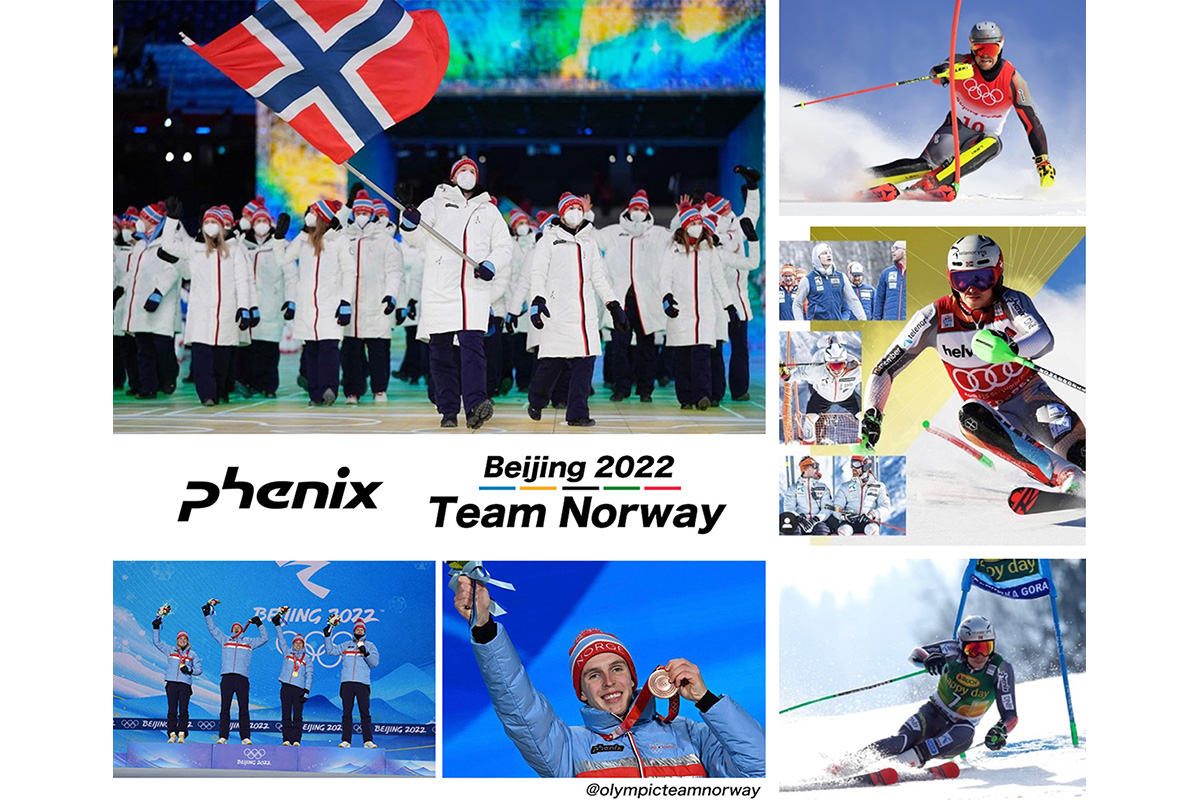In this interview with Kenta Nishimura, President of SHIFFON, unveils the dynamic and expansive business model of SHIFFON, positioned as a decathlon entity covering diverse sectors beyond fashion. Nishimura discusses the company's unique approach, emphasizing the synergies between low-end and high-end fashion, brand management strategies, and strategic international expansion. He outlines SHIFFON's three core pillars for future growth, focusing on the PHENIX skiwear brand, the traditional school bag business, and a mutual cross-border platform. With sustainability in mind, Nishimura highlights the importance of adding value to brands and outfits, steering away from fast fashion, as the company aims to become a publicly traded entity by 2026.

First of all, please give us a brief introduction to Shiffon. What do you consider to be your company's core competencies and the key strengths that set you apart from your competitors?
SHIFFON started as an importer and wholesaler of foreign brands, and today, the company has its own brand business, wholesale division, OEMODM division, sports lifestyle division, school supply division, overseas division, e-commerce division, and directly managed division, each of which has established supply chains in a wide range of genres. The company has established a supply chain in a wide range of genres.
However, I do not consider SHIFFON a fashion company. Our scheme is a business model, and textiles are simply tools for business. Human beings need clothing, food, and shelter to survive. We belong to this garment industry, which is like a decathlon in that it covers so many different areas. Our garment industry includes not only the fashion sector but also the sports sector and many other sectors. It is very finely segmented by industry,
In the fashion industry, some companies operate in the Paris and Milan collections, while others operate in fast fashion, GMS, and mass merchandisers. We cover all these layers of the clothing industry.
I think it is easy to understand if you compare it to a board of directors. If we color-fill in where each company competes on this board, most companies can only partially fill in the blanks. While there is a direction to specialize as a company, our company is looking to fill in all of the board's eyes: clothing, food, and shelter. This is why we describe ourselves as a decathlon company.
Interestingly, Japan is an island nation that has developed its unique business style over the years. Each segment has a different culture and a slightly different way of doing business. Even within the apparel industry, everything is different. The people who work there, the regulations, or even the way they do business are completely different and diverse. Our business strategy is to increase the horizontal axis, as in the Go board. The important thing about this horizontal axis is marketing power, which might be furniture, for example, or appliances.
Shiffon has a high level of marketing ability to expand its network. What we are trying to do is to color the masses of the garment industry in our colors. It is like a crossword puzzle; sometimes the words are immediately recognizable, and other times we need to fill in other areas to complete the puzzle. Business, in my opinion, is not simply about creating something new, but about exchanging what we are good at in each field and bringing that to other fields.
Take sports and fashion, for example. These are two different categories, traditionally sold in two different types of stores. Sportswear is more concerned with the functionality of the textile and therefore the technology that creates the functionality. The fashion industry focuses on trends. By incorporating functionality from the sports sector into the fashion sector and combining it with good design, new products can be created, and vice versa.
For example, randoseru (school bags) for school children This is a traditional Japanese cultural item that all Japanese have experienced. What is unique about these randoseru is that they are usually purchased by grandparents for their grandchildren, making it a once-in-a-lifetime event for Japanese families. Many people go to physical stores to select their school bags, and surprisingly, only about 1% of purchases are made through e-commerce. As this data shows, Japan is a very conservative market, with 99% of sales coming from physical stores. However, in terms of the fashion industry, 50% comes from e-commerce. As experts in both school bags and fashion, we have incorporated the concept of fashion e-commerce into our school bag purchasing. This has allowed us to increase the percentage of e-commerce purchases to 35%. We know the tools and results of other industries and can apply them across the board.
While we used to be only passionate about OEM and ODM, our strategy now is to increase our horizontal segments in the garment and textile industry. First, we added sports, school bags, and skis, to cover the entire market within a year with our accumulated know-how. Then, each segment will be sublimated into its brand within three years. Our sales target is 1 billion yen in three years. We will create and pursue new businesses every year.

Traditional school bags for school children manufactured by Shiffon
We noticed that your company caters to the low-end as well as the high-end fashion industry. There are many different brands under your umbrella, what synergies do you see?
Brand management is not that difficult, and we have several brands, all with similar concepts. As I mentioned earlier, we are trying to fill each square inch of the apparel industry grid with the colors of our company.
When first planning a brand, you need to determine the category of your customer. For example, a gentleman in his late 40s will not be interested in young women's apparel. It is important to offer the right fashion to the right customer. Even for a trading company, it is difficult to cover all demographics. From a manufacturing standpoint, because we know both extremes, we can determine which point is the key to customer satisfaction. Just because it is a luxury brand does not mean that all materials need to be high-end materials. There needs to be a balance, and that is our expertise.
For example, ski jackets require more vivid colors than regular jackets. Our company has accumulated experience in manufacturing more sophisticated fashions, so our experience helps us in the production of ski jackets, and vice versa, our ski jacket experience helps us in the production of high-end fashions.
Decathletes must compete in 10 events, including the 100-meter run and high jump. Through the accumulation of these efforts, they win gold medals, but athletes do not excel in one event. Our organization employs a pooling system similar to that of consulting firms. In this system, a team is formed for each project that crosses divisions such as sales, planning, production management, and so on.
In this way, the individual becomes stronger and becomes a useful player. As knowledge increases, ideas are born. Ideas that ordinary salespeople cannot come up with even after 20 years of working for a single company are all born when a great deal of information is accumulated in the individual. A virtuous cycle is created in which people like serial entrepreneurs emerge from within.
Which of your company's brands, sectors, or products do you see the most potential for business growth in the future?
Some experts predict that Japan's market will shrink in the coming years, which of course has its upsides. A smaller market size means less competition and fewer new entrants. In other words, there is a greater chance of gaining a higher market share. The market opportunities are not that much different. 2026 is our goal to become a publicly traded company, and we have several strategies to achieve this goal.
One of its strategies is the skiwear brand known as PHENIX. The scheme works with distributors in different countries, and SHIFFON also manages global distribution.

Skiwear phenix
We are aware that the ski market itself is shrinking, and we realistically understand that fewer people are interested in skiing than before. However, ski wear is packed with technology, especially considering that this brand has a 70-year history. Our strategy from now on is to strengthen not only ski wear but also urban wear derived from ski wear.
The second pillar is the school bag business I mentioned earlier: for 80 years, the shape of these school bags has remained the same, and they are all made in Japan. Given that other textiles are made in China and other countries, you may wonder why only these randoseru are made in Japan. 2023 is the year, and we must change this trend. Because the elementary school randoseru industry is like a village tucked away deep in the woods where no one is allowed to enter. We entered this industry four years ago and are already among the top four. The key to progress in this traditional industry lies in the change of production location: starting in 2023, we began production in China. We have invested heavily in equipment and have provided technical assistance. We have raised the bar so that what is produced in China is on par with what is produced in Japan. Currently, all materials are made in Japan and transported to China. This is true now, but eventually, we would like to leave material development to China and change the cost to our advantage.
Japanese families have small Buddhist altars, and hina dolls are given to children on Children's Day. There is a uniquely Japanese custom of " Hinamatsuri " (Girls' Festival) on March 3 every year. Since there are few competitors in this field of hina dolls, customers must base their purchases on market prices set by several companies. Similarly, the companies that manufacture school bags for elementary schools set the prices, which these days range from 80,000 to 90,000 yen, or around US$600. 30-40 years ago, the price was around 30,000 yen, or around US$200, which means that the price has jumped about threefold. The reason why prices have risen so much has to do with stagnant wages and a declining child population. When I was a child, there were about 2 million children in Japan, but now the number is down to about 700,000. You can imagine that the cost of school bags would drop considerably if production were switched to China.
I think the third pillar is what we call "cross-border business" (mutual cross-border platform). There are platforms like Farfetch, which is a platform we want to create for our brands. Farfetch in particular is a platform that also has its stores. The platform we envision is mutual, not one-sided. We have strong connections in Europe and these companies have their retail stores as well as national e-commerce channels like Shopify. We know their API information. We can develop a team port management system that standardizes different APIs and business practices in different countries. The business model we envision is to take these individual APIs through our system, automatically convert them, and publish them on our website as the SHIFFON import platform. A huge amount of data will be automatically converted and placed on the platform. The website already contains information on several stores, with about 8 stores in Italy. The platform aims to accommodate not only seasonal collections but also outlet inventory. Right now there are only 8 stores, but once this number grows to several thousand stores, the platform will be available not only in Japan but also in other countries such as Korea and China.
The launch of this website in markets such as China, Korea, and Singapore is what we consider the second phase of this plan. The third phase is an API connection between us and the companies we do business with: through the API, the website will not only accumulate information on the companies we do business with, but the website will also provide information to the companies we do business with . By having this mutual platform, we hope to pave the way for Japanese brands to expand their business overseas.
Currently, when a customer purchases a product through the SHIFFON website, the information is instantly sent to the provider; the API is connected so the information is updated every minute. We call this whole process our mutual cross-border platform strategy.
The combination of these three businesses creates the core pillars of our business and a path toward an initial public offering (IPO). This is a completely different approach than the traditional path to an IPO.
Having a dialogue with key players in the industry, I recognized that open innovation and finding local partners are the keys to developing international markets. You also mentioned that you have many relationships with international companies and from your website we can see that you work with international brands such as Diesel, Armani, and Kappa. What role do partnerships play in your business model and are you looking for new partners in foreign markets?
First of all, I believe that business should be conducted on a global basis. However, when launching a new business, one must inevitably focus on the domestic market. We want to start each business in the domestic market. As for new partners, we are very open regardless of market segment. For example, we had a meeting today with an American sports brand. When we met with them, we saw the potential for different applications, so it is important to be open to any proposal when working on cooperation.
One example of our grid strategy I mentioned is with the luxury brand Emporio Armani. They excel in branding luxury items, but they also have a sports brand called EA7. Other companies excel in sports, but they do not know both the luxury and sports sectors. There is room for us here, and Emporio Armani feels more comfortable working with a company like ours, which has extensive knowledge in a wide range of areas.
You mentioned the idea of thinking globally, and we learned from our research that you have expanded beyond Japan to the Netherlands, Singapore, and China. In which countries do you want to continue your international expansion next, and what strategies do you plan to employ to achieve this?
Our international strategy begins with expanding our factory in China. Currently, it primarily manufactures basic outerwear and we hope to increase its production capacity and technology to be able to offer more functional items.
The Dutch location is essentially a trading company responsible for European trading. We intend to maintain this because of our future platform plans. The Singapore location, on the other hand, will play an important role in the expansion of e-commerce within the Southeast Asian region. We are strengthening our position by hiring new local staff. Considering all of this, strengthening our cross-border business through our e-commerce channels is the strategy we most want to bring to the forefront, both from an economic standpoint and from a business efficiency standpoint, as it eliminates the need for a local presence .
Anothor opportunity is OEM for a European brand. For about 6 years now we have been doing OEM for a fashion brand called "Viktor & Rolf". Similar fashion brands have their domestic supply chain and produce in China, which is not very attractive. This is why they see Japanese trading companies like us as more capable of managing OEMs, and that is why we want to increase our supply as an OEM provider to Italian and European brands such as Diesel.
The clothing industry is considered to have a very long supply chain, and in addition to this, fast fashion is known to create a lot of waste. It is estimated that about 10,000 pieces of clothing are thrown into landfills about every 5 minutes, what steps is Shiffon taking to be a more sustainable company and to make its production more ecological and responsible?
While environmental concerns are very important, from the consumer's point of view, the use of recycled yarns limits the possibilities for clothing production. This leads to dissatisfaction because only certain types of clothing can be manufactured using recycled yarns. What I consider environmentally friendly is to add value to brands and outfits, avoiding the fast fashion trap and maintaining value on the second-hand market. A good brand and high quality ensures that the item will be used much longer.
Imagine that you go back to the year 2034 and conduct this interview again. What goals or dreams would you hope to have achieved during that new interview?
It is very difficult to think about the future. Only three years ago we had no concrete ideas about how the future would unfold, including getting into the ski business. Therefore, it is difficult to predict exactly what progress we will make in 2034.
0 COMMENTS